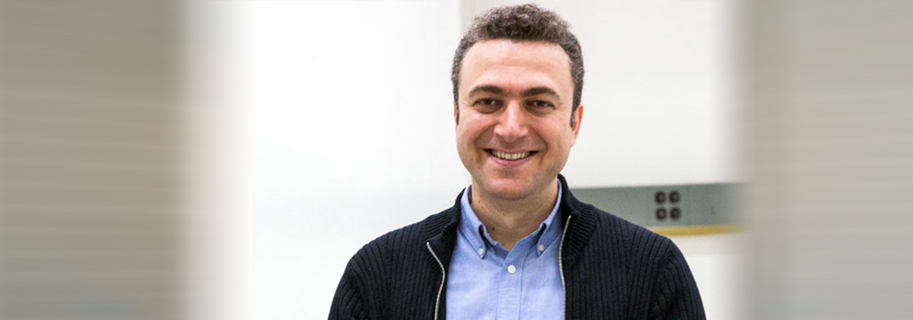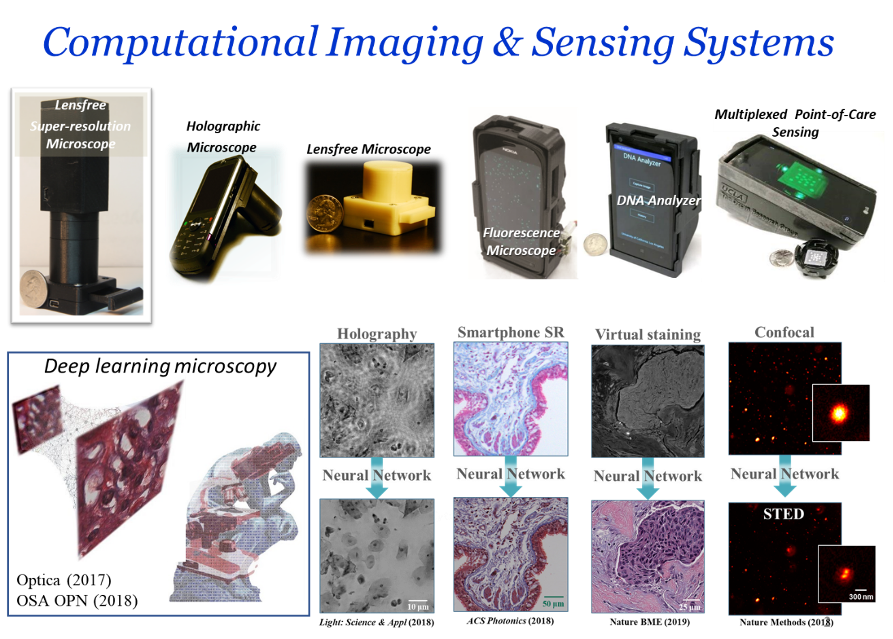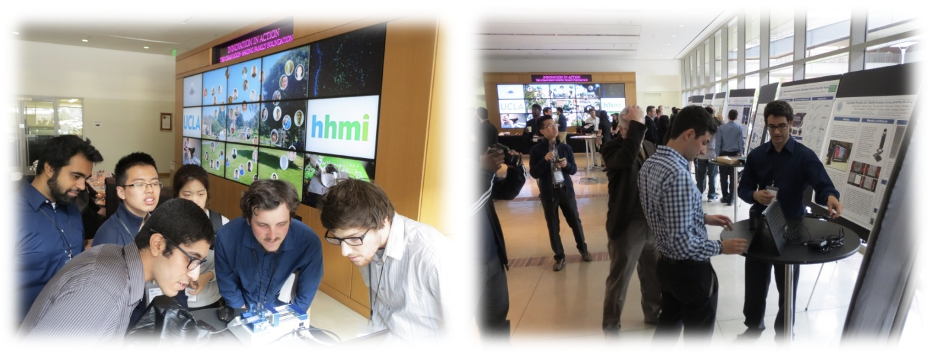
Q&A with Professor Aydogan Ozcan
Aydogan Ozcan is a UCLA Samueli professor of electrical and computer engineering and holder of UCLA’s Volgenau Chair for Engineering Innovation. He also holds faculty appointments in the Department of Bioengineering and the David Geffen School of Medicine at UCLA. He serves as the associate director of the California NanoSystems Institute at UCLA.
Ozcan is a fellow of the National Academy of Inventors (NAI) and holds over 70 patents in microscopy, holography, computational imaging, sensing, mobile diagnostics, nonlinear optics and fiber-optics. He is the author of one book and the co-author of more than 1000 peer-reviewed publications in leading scientific journals and conference proceedings and abstracts. Ozcan has received many major awards, including the Presidential Early Career Award for Scientists and Engineers (PECASE), International Commission for Optics ICO Prize, Dennis Gabor Award (SPIE), Joseph Fraunhofer Award & Robert M. Burley Prize (Optica), SPIE Biophotonics Technology Innovator Award, Rahmi Koc Science Medal, SPIE Early Career Achievement Award, Army Young Investigator Award, NSF CAREER Award and NIH Director’s New Innovator Award.
“To train the next generation of engineers and innovators, I have established an interdisciplinary undergraduate research program on biomedical optics and computational imaging. I have trained over 300 undergrad researchers in my lab, and approximately 40% of the graduates of this program have been female.”
Q: What are some of the main research projects that you are focusing on in 2023-2024?
A: There are three main areas that my lab is working on. The first one of these is optical computing using light-matter interactions. We structure materials at the sub-wavelength level in 3D so that as light propagates through them they compute tasks for us, such as the optical recognition of target objects in front of us. The main advantage of these systems is the fact that their results come out extremely quickly, as the light travels through very thin materials. This form of computing does not consume power except for the illumination light and detection.
A second research theme in my lab involves microscopy and the use of deep learning to enhance imaging and sensing systems. For example, using deep learning, we are processing tissue samples and staining them for pathologists to diagnose the condition of the patient without any chemicals involved. We call this the virtual staining of tissue using Artificial Intelligence (AI).
The third area of research in my lab is mobile sensing and point-of-care diagnostics. Here, we create cost-effective and mobile devices that can sensitively and specifically measure different biomarkers from bodily fluids. This line of research aims to bring advanced sensing and diagnostics technologies to resource-limited settings so that their performance can match laboratory-grade counterparts, aiming to democratize biomedical sensing at large.

Q: How do you work with undergraduate and graduate students on these research projects?
A: To train the next generation of engineers and innovators, I have established an interdisciplinary undergraduate research program on biomedical optics and computational imaging. I have trained over 300 undergrad researchers in my lab, and approximately 40% of the graduates of this program have been female. Each quarter, 25-30 undergrads join our projects and, led by my grad students and postdocs, these undergrads have co-authored more than 150 journal articles and 300 conference proceedings and abstracts. They have also presented their research at various conferences and meetings.
Furthermore, my lab has been organizing an annual Undergraduate Research Symposium at UCLA at the end of each spring quarter. Each year, undergraduate researchers from around 10 different departments at UCLA have been giving oral and poster presentations, in addition to demos about the research that they conducted in my lab. Several awards are presented annually to these undergraduate students. For example, at the end of spring 2023, we had 24 oral and poster presentations that were given in groups by our students in front of a highly diverse audience at the CNSI auditorium.
Q: How will your research be translated into new technologies?
A: A very exciting development in my career right now is a spin-off company from my lab called Pictor Labs. It aims to transform a century-old field and redefine histopathology and how it is practiced. Pictor in Latin means painter, and we are painting the microstructure of tissue using AI.
Approximately five years ago, my lab published a paper in Nature Biomedical Engineering that introduced a deep learning-based method to “virtually stain” autofluorescence images of unlabeled histological tissue sections, eliminating the need for chemical staining. This technology was developed to leverage the speed and computational power of deep learning to improve upon century-old histochemical staining techniques, which can be slow, laborious and expensive. In this seminal paper, we showed that this virtual staining technology, using deep neural networks, is capable of generating highly accurate stains across a wide variety of tissue and stain types. It has the potential to revolutionize the field of histopathology by reducing the cost of tissue staining, while making it much faster, less destructive to the tissue and more consistent and repeatable. Motivated by the transformative potential of our virtual staining technology, we have also begun the process of commercializing it by founding Pictor Labs, a new Los Angeles-based startup.
Through Pictor Labs, we aim to revolutionize the histopathology staining workflow using this virtual staining technology. By also building a cloud computing-based platform that facilitates histopathology through AI, we will enable tissue diagnoses and help clinicians manage patient care. I am very excited to have this unique opportunity to bring our cutting-edge academic research into the commercialization phase and look forward to more directly impacting human health over the coming years.

Q: How could private funding through donor gifts enable you to further your research at UCLA?
A: Federal funding, despite being extremely valuable and important, is far from being sufficient for our labs to compete globally in our research and training missions. We need private donor support to help us train our students, especially undergraduate students, with hands-on experience in cutting-edge research. Short-term research experiences in the form of summer internships are unfortunately not very effective, as meaningful research outcomes and real impact in hypothesis-driven thinking cannot be fully achieved in 10 weeks of summer sessions. In my lab, students stay at least three quarters in an intensive research environment, which provides unmatched research skills for their development as engineers and scientists.
Private support would help sponsor our researchers to mentor more undergraduate students as they conduct cutting-edge research and publish with us in the most prestigious journals of the field. Just within the last year, my lab has had more than 25 journal publications in leading journals, including Science Advances, Nature Photonics, Nature Methods, Nature Machine Intelligence, Nature Biomedical Engineering, Nature Communications, Advanced Materials, ACS Nano, Light and others — with several of these publications including undergraduate co-authors. This is very important for training the next generation of STEM leaders.
I hope to excite UCLA friends and philanthropists to consider helping us expand the impact of our research and training programs in our lab at the UCLA Samueli School of Engineering.
